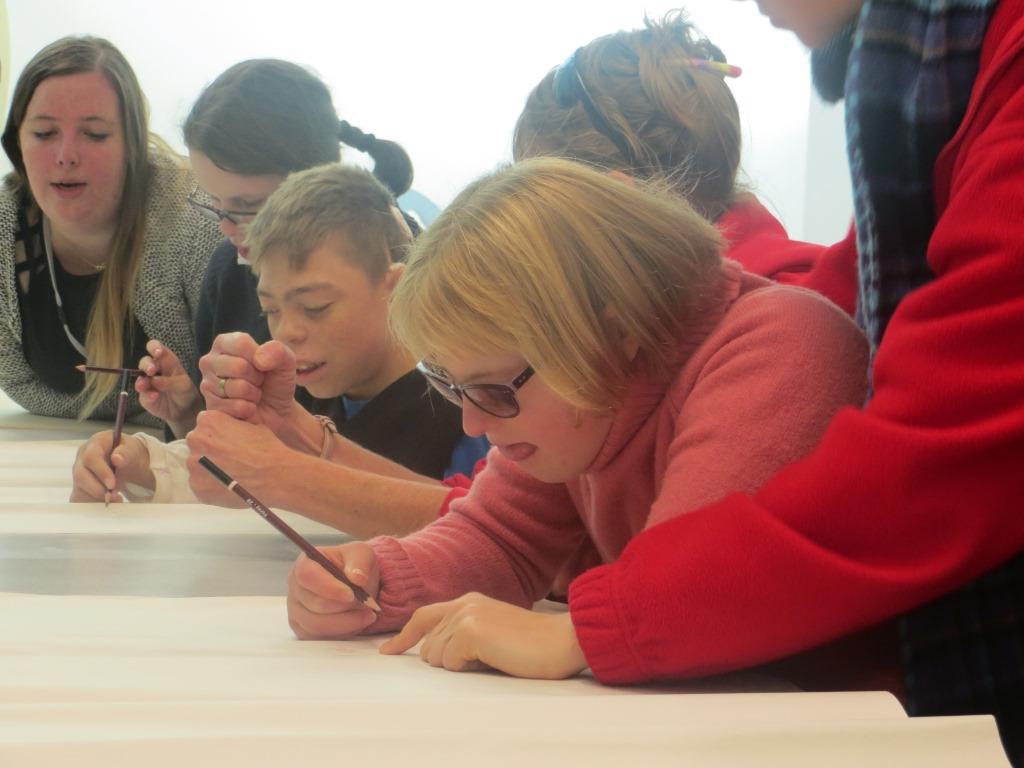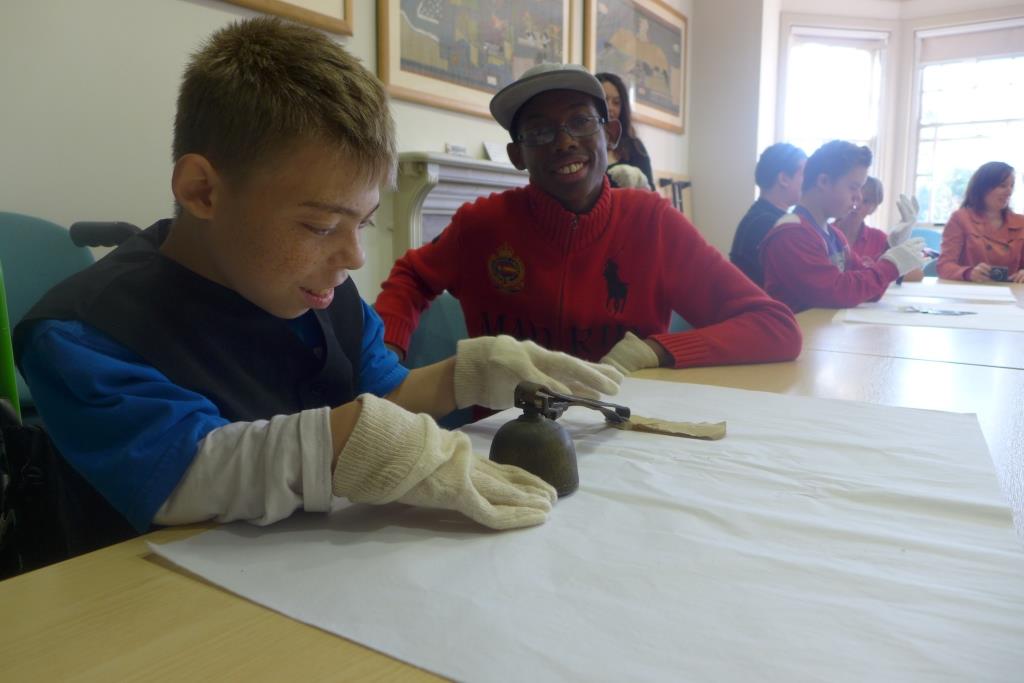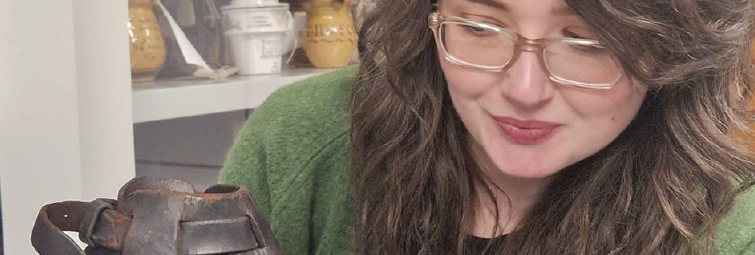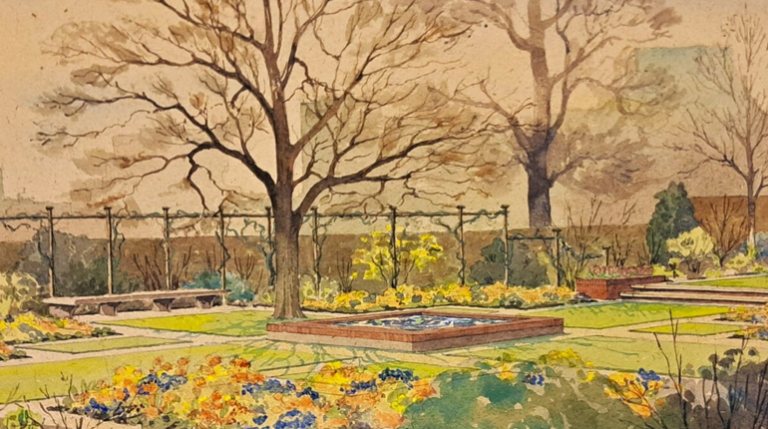Object handling with Addington School
-
Author
- Alison Hilton
-
Published Date
- February 4, 2016
<<
A little while ago we welcomed students from The Addington School who came to find out what it’s like to work in a museum. Assistant Volunteer Coordinator Rhiannon really enjoyed introducing them to the world of museums, our collections and the role of the curator…
Last term the museum welcomed a group of Further Education (FE) students from The Addington School in Woodley. They came to the museum to find out what it is like to work in a museum as part of their Transitions Workplace Training. Other businesses that have shown Addington students around their world of work include Reading Buses and Reading Fire Station, so we had a lot to live up to.

The objective of the session was that the students would go away with knowledge of the purpose of museums, an understanding of what we do at The Museum of English Rural Life and having had a chance to actually handle some museum objects and guess what they were. The day started with a quick brainstorm of what the group already knew about museums, with us asking questions such as ‘What is a museum?’, ‘What do you find in a museum?’, ‘Who works in a museum?’ and ‘Who visits museums?’. The answers we got were hugely varied ranging from “old people go to museums” to “at a museum you find things on the walls”. Some of our particular favourite comments about museums were that they are “special” and “magical” places, “that they are for everyone” and also we saw a statement that “museums are boring” as a personal challenge to prove them wrong!
After establishing general information about museums we enjoyed taking the group on a special behind the scenes tour of the building. First we had a look at the gallery space; confirming someone’s earlier comment that museums are big places by seeing the open space we have whilst the museum is being redeveloped. Next came a trip up to the mezzanine level where the students got their first glimpse of some of the objects they would be handling later on. Guessing what different corn dollies represented was a particular hit, as was a procession past all of the tools hung on the mezzanine wall.
Once the students had seen some (actually hundreds) of objects it was time for a rundown of how to handle them. The group put themselves into the mind-set of a curator who had been given a set of objects that they had to identify using sight, sound, smell and most importantly touch. Some objects were harder to identity than others; a Strickle (a tool used to sharpen scythes) and a Polehead from 1700s, testing the students curatorial powers the most. It was wonderful to see the real respect the group had for the objects, even under the extremely tempting circumstance of being told not to ring a sheep bell!
We had a marvellous day with the students and it was a joy to introduce them to the world of museums. We hope that they went away with a new appreciation of museums and the type of work that goes on within them, as well as some changed minds about whether or not museums are boring!







